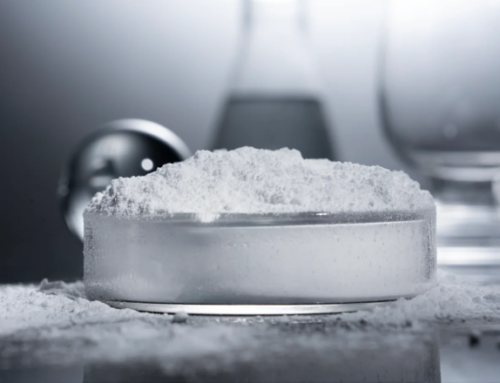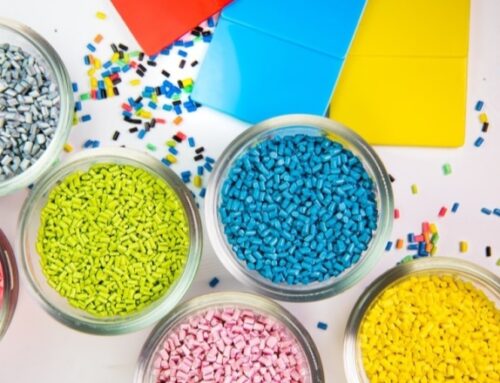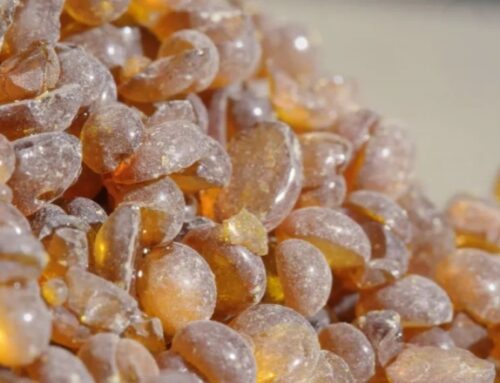At the Paris Olympics, the award gowns of the Chinese sports delegation were dignified and elegant, embodying a profound green and low-carbon concept, achieving over 50% carbon reduction in clothing production. The award server is actually made from discarded plastic bottles in daily life.

In today’s society, plastic products are everywhere, bringing great convenience to our lives, but at the same time, they also bring serious environmental problems. Recycled waste plastic can be turned into treasure in various ways, but the process of plastic recycling is full of challenges.
Ⅰ Major Families of Plastics
The plastics we come into contact with in our daily lives can be simply divided into seven major families: PET (polyethylene terephthalate), mainly used for water bottles, fiber fabrics, billboards, etc; HDPE (high-density polyethylene) is used for plastic containers and some plastic bags, waterproof materials, pallets, etc; PVC (polyvinyl chloride) is used for raincoats and plastic films, non food packaging, furniture, decorations, toys, etc; LDPE (Low Density Polyethylene) is used for cling film, food packaging, gloves, disinfectant cloths, etc; PP (polypropylene) is used for microwave lunch boxes, some pipes, some plastic boxes, electrical components, etc; PS (polystyrene), used for fast food boxes, foamed plastics, circuit insulation materials, etc; PC (polycarbonate), used for baby bottles and space cups, protective equipment such as goggles, car lights and window materials, etc.

The structural properties, scope of use, recycling purposes, and ease of use of these plastics vary. At present, many regions are actually limited to recycling plastic products such as mineral water bottles and boxed beverages, while plastic materials used in yogurt boxes, plastic tableware, coffee bags, etc. are often burned or buried due to limited recycling capacity. On the other hand, the heating process shortens the polymer chain, leading to a decrease in plastic quality. Most plastic products undergo “downgrading recycling” and become items with lower quality than the original product.
In addition, the history of developed countries transferring plastic waste to developing countries, which began in the last century, was completely stopped by the end of 2019 after China’s Green Fence Action in 2013. During this lengthy process of dealing with imported waste, China imports over 7 million tons of plastic waste annually. However, due to the complex pre recycling steps and immature processing techniques, it has caused damage to the natural environment.
Ⅱ Four levels of plastic recycling
1. Primary recycling
The most ideal first level recycling refers to the process of recycling plastic scraps and transforming them into plastic products with identical or similar properties through processing. There are basically no chemical changes involved in this, making it the simplest and most efficient. However, primary recycling is often difficult to implement: not to mention that many waste plastics have undergone natural degradation and aging, leading to changes in their chemical structure; Recycling plastic bags and lunch boxes contaminated with oil pollution has also become too difficult.
2. Secondary recycling
Secondary recycling is the process of processing waste plastics into products of slightly lower quality compared to those made from new materials. Products made by recycling phenolic resin and adding some newly manufactured phenolic resin based on it.
3. Third level recycling
If it is impossible to remake plastic products, chemical methods are used to decompose and recycle plastic to obtain chemical raw materials or other materials such as artificial petroleum.
4. Fourth level recycling
If the cost of using chemical methods to treat waste plastics is too high, then various means can only be used to burn and release the energy in the plastic while avoiding pollution caused by the combustion process as much as possible. Turning plastic into an energy material is a fourth level recycling.

Ⅲ The Green and Low Carbon Path of Olympic Winning Clothes
1. The advantages of transforming beverage bottles into award gowns
The production process of Olympic award gowns uses environmentally friendly fabrics such as recycled polyester, which helps reduce carbon emissions. The raw material of recycled polyester is actually the beverage bottles commonly used in our daily lives. The raw material of recycled polyester is PET bottles, which are processed through crushing, cleaning, and drawing (melt spinning, etc.) to make corresponding textiles, and then become the raw material for Olympic athletes’ clothing.
This type of plastic is food grade, and recycling it to make clothes is equivalent to downgrading the use of this plastic, which is a way of recycling. During this process, each link has strict quality standards and testing procedures to ensure that impurities and harmful substances are thoroughly removed. The resulting regenerated fibers fully comply with relevant national safety standards and can be used to produce sports clothing and other products.
2. Steps from waste plastic bottles to usable fabrics
In some communities in Haiyan County, Zhejiang Province, citizens put discarded beverage bottles into smart recycling devices. The smart devices will settle points based on the weight of recyclable materials, and citizens can use the points to exchange for daily necessities. These recycled beverage bottles will be transported to a recycling station for sorting and packaging before being transported to the factory for renewable processing.
Each batch of packaged beverage bottles corresponds to an IC card. By reading the IC card, the full process traceability of the recycling location, quantity, quality, etc. of this batch of discarded beverage bottles can be carried out. The beverage bottles entering the factory will undergo secondary screening. Some beverage bottles with colors and materials that do not meet the requirements will be “eliminated”, and the remaining beverage bottles will enter the fully automated production line. After whole bottle cleaning, crushing, scrubbing flotation, automatic picking and other processes, they will be turned into small plastic pieces 2 to 3 centimeters long.
After rinsing, drying, and separating impurities, the bottle pieces are made into plastic particles the size of rice grains, which are then processed into long fibers through fully automatic spinning equipment for wire drawing and winding. Long filaments will be rolled into silk cakes through mechanical equipment, which become the textile raw materials for fabrics and can be supplied to downstream enterprises to make fabrics such as clothing, bags, sofas, curtains, etc.
3. The process of shaping silk scarves
Technological innovation has enabled discarded beverage bottles to be “reborn”, not only transforming them into clothes, but also into softer scarves. At a press conference held by the State Council Information Office, a colorful scarf caught the attention of everyone present. This scarf is made from three discarded beverage bottles, all of which are from the public welfare beach cleaning campaign in Nansha District, Guangzhou.
Volunteers pack the collected beverage bottles and send them to a professional factory for centralized processing. The beverage bottles become raw materials that can be further processed, and then undergo high-temperature drawing to become fibers, which are further produced into yarn; The yarn is transported to the textile factory, and after weaving, printing, and processing, a beautiful environmentally friendly scarf is born. According to calculations, approximately every 3 beverage bottles can be made into a scarf, reducing carbon emissions by 85.32 grams.

Ⅳ The Transformation Journey of Plastic
1. The process of transforming plastic bottles into clothing
For easily recyclable PET plastics, the most efficient first level recycling can be used. Heat and melt the collected mineral water bottles, and process them through a series of methods to separate particles of specific sizes. After being reshaped, it becomes a brand new artificial yarn that can be transformed into clothing on the machine. This process involves a very complex process with strict quality standards, so there is no need to worry about toxic and harmful substances being worn on the body.
Some of the plastic bottles recycled domestically are also processed in this fairly advanced way. But the problem is that the quality of recycled plastic is often uneven, and the color of the bottle body and cap materials is not consistent, which can lead to a discount in the quality of the produced products. The entire production process still needs to be improved through research and development.
2. The recycling method of PS plastic
Taking PS plastic, which currently has a very low recycling rate in China, as an example, in order to increase its recycling rate, researchers have come up with many methods and conducted experiments. Finally, they found this method: plastic also has solubility in specific solvents, just like salt is easily soluble in water but difficult to dissolve in alcohol. According to this principle, waste plastics can be dissolved to form a solution. Separate the solvent and solute again to obtain polystyrene.
After obtaining pure recycled plastics, if they are reshaped and modified to make new PP plastic products or processed into coatings and adhesives through multiple steps, it belongs to first and second level recycling. After entering the third stage of recycling, polystyrene plastic can be degraded into small molecule monomers under different temperature and catalyst conditions, and finally recycled as an important chemical raw material.
3. The method of turning plastic into oil
A very interesting recycling method is to use waste plastics (including PE, PS, PET, PP) and coal as raw materials to generate liquid petroleum substitutes under catalytic conditions. The idea behind this processing method is also very simple: plastic products have relatively more hydrogen and less carbon in their composition, while coal has the opposite: less hydrogen and more carbon. Under certain conditions, a small molecule mixture with a moderate hydrogen to carbon ratio can be obtained through reaction, which is a novel and practical approach for replacing petroleum.
Another recycling method is to use the blast furnace injection technology used in blast furnace ironmaking production: in the blast furnace, heavy oil or similar coal powder is injected as fuel, and then sorted, cleaned, and dried 6mm sized plastic particles are used as raw materials for ironmaking instead of some coal powder. Although this method can reduce solid waste generation while avoiding polluting gases, it cannot utilize PVC containing chlorine, which also means that every plastic recycling method has its own limitations.
Last
Plastic recycling is a challenging yet highly meaningful task. Although we are currently facing many difficulties in plastic recycling, with the continuous advancement of technology and the increasing awareness of environmental protection among people, we have reason to believe that plastic recycling will become more efficient and convenient in the future. The national standard “Guidelines for the Recycling and Reuse of Plastic Waste” will officially come into effect on December 1st. It is believed that with the release and implementation of the standard, it will also promote the management of the entire process of plastic product production, circulation, use, recycling, and disposal, reflecting the circular economy concept of “reduction, reuse, and resource utilization”.
We can all start from ourselves, reduce unnecessary use of plastic products, and do a good job of simple classification in the early stage, contributing our own strength to solving the problem of plastic pollution. The task is heavy and the road is long. We still need to work together to turn plastic waste into treasure and create a better future for our planet.
Article source: www.xianjichina.com
M&J International Trading Co., Ltd





